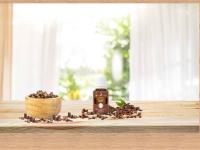March 1, 2023
Staphylococcus aureus is a commensal microbe that often causes wound infections. It is a multidrug-resistant organism that colonizes skin, wounds, the nose, the perineum, and the throat, leading to infections in various organs. MRSA is opportunistic and commonly infects wounds, which can lead to impetigo, cellulitis, cutaneous abscesses, or even life-threatening complications such as necrotizing fasciitis and pyomyositis. Approximately one in ten hospital admissions worldwide results in hospital-acquired infections and of these 8% are caused by MRSA.
Syzygium aromaticum, commonly called clove, (family-Myrtaceae), is indigenous to the islands of Indonesia. It is now cultivated worldwide as a flavoring agent, for medicinal purposes, and for use in perfumes. It is widely used as a food preservative due to its antimicrobial properties. Besides its antimicrobial properties, antioxidant, analgesic, anesthetic, anti-inflammatory, and insecticidal activity, it is also used for preventing degenerative diseases because of its antioxidant effects. Clove bud oil is a common healing agent for wounds and burns in traditional medicine. Clove oil has been reported to possess several biological activities, including antibacterial, anti-inflammatory, analgesic, antioxidant, fungicidal, and antitumor activities.
Since the phytochemicals present in clove bud oil are responsible for antimicrobial activity, eugenol is one of the phytoconstituents that might have significantly contributed to the antimicrobial effects. Eugenol is a primary constituent of clove but it is also found in cinnamon, pepper, and holy basil (Ocimum sanctum). Another constituent that is responsible for both antibacterial and wound-healing properties is caryophyllene. Apart from clove, several other plants, such as basil (Ocimum spp.), cannabis, lavender, and black pepper, contain caryophyllene. A preclinical model found that the topical application of diluted clove essential oil enhanced wound healing and reduced MRSA load in infected wounds. The 10% dilution was the most effective, which was improved when combined with the imipenem (an antibiotic that fights bacteria).

